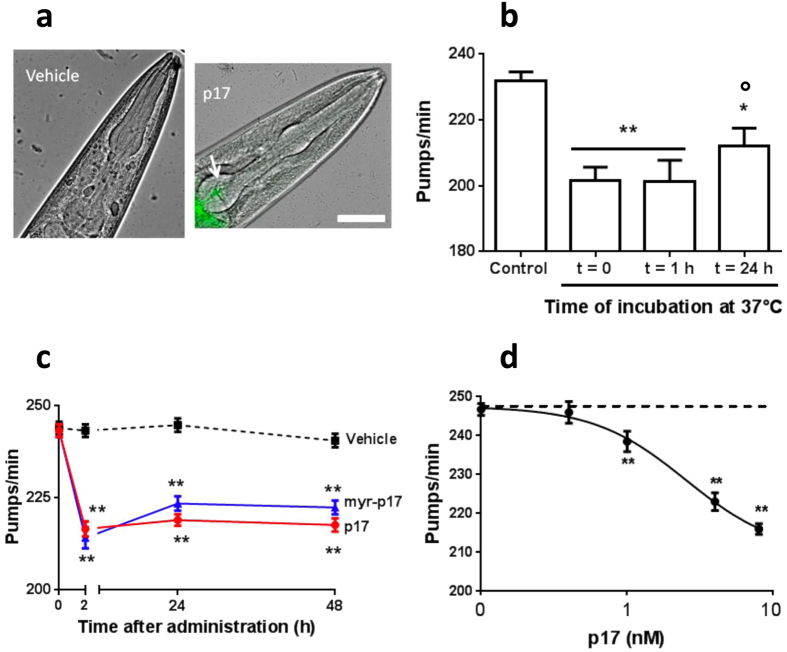Figure 3.
Effect of p17 on C. elegans pharyngeal motility. (a) Representative images of the p17 localisation as overlays of Atto-fluorescence and light microscopy in worms. Scale bar = 50 µm. Worms fed for 2 h vehicle (10 mM PB, pH 7.4) or 4 nM p17-Atto. (b) p17 (4 μM in 10 mM PB, pH 7.4) was incubated at 37 °C. At different times (t = 0, t = 1 h and t = 24 h) aliquots were taken, diluted to 4 nM with PB (pH 7.4), and administered to worms. Control worms fed PB (pH 7.4) incubated for 24 h at 37 °C. Pharyngeal pumping was scored by counting the number of pharyngeal contractions in one minute (pumps/minute). *P < 0.05 and **P < 0.01 vs. Control, °P < 0.05 vs. Time 0 and 1 h, one-way ANOVA and Bonferroni post hoc test. (c) p17 and myr-p17 (at 4 μM in 10 mM PB, pH 7.4) were diluted to 4 nM with PB (pH 7.4), and administered to nematodes as described above. The pharyngeal pumping was scored before plating (t = 0) and at different times after plating. Control worms received vehicle alone (Vehicle). (d) Dose-response effect of 0.4–8 nM of p17. Control worms received vehicle alone (Vehicle, dotted line). Data are mean ± SE (N = 30 worms/group). **P < 0.01 vs. Vehicle, one-way ANOVA and Bonferroni post hoc test.

